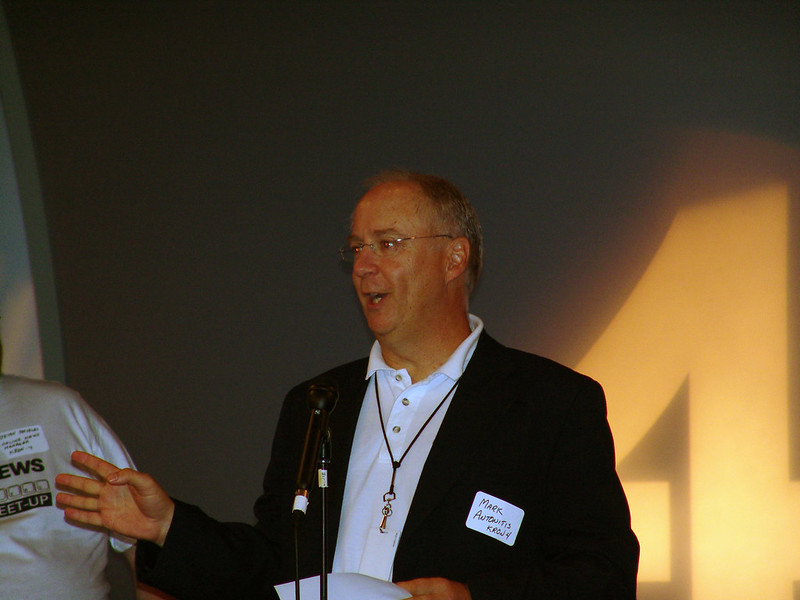I spent the afternoon at KRON-TV with about 100 other bloggers as part of a hosted meetup. In attendance was a diverse crowd of bloggers covering food, photography, travel, technology, and local news. General Manager Mark Antonitis (pictured above) hosted the event.
KRON is a television station struggling to survive after being separated from NBC a few years and they differentiate themselves from the market by airing many programs with a local focus such as full coverage of parades or a weekly show about exploring the lesser-known parts of the San Francisco Bay Area.
I arrived at KRON’s television studios not really knowing what to expect. I commend KRON for putting on the event and starting the conversation. KRON plans to have its own local news aggregator on its website with staff responsible for reading the weblogs of over 500 bloggers they have already identified in the bay area. I spoke with some of the staff about Creative Commons licenses and the willingness of bloggers to share their content in exchange for no more than proper attribution. KRON is considering opening up some of its video content for bloggers to use in and remix.
Overall I came away disappointed with the event, possibly because I had set my expectations a bit too high. There was no question and answer period and no discussion forum, just a one way message from mainstream media. KRON was airing infomercials during our visit to the station. Some tips for KRON and other media outlets who would like to engage bloggers:
- I want to learn what you are all about and what makes you different than the next media outlet and what may be your unique perspective on news or covering community events.
- Many bloggers wish they could learn how to be better at their hobby by learning from professionals. Provide a learning experience in exchange for licensed content.
- Treat bloggers as peers. No one likes to be talked down to or feel like you’ve changed your lingo to be more hip.


